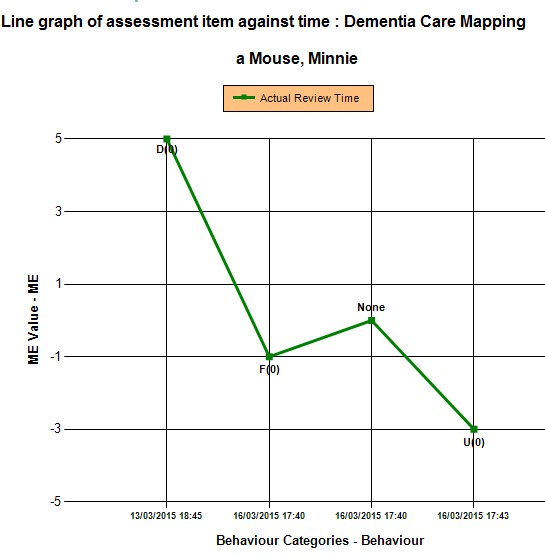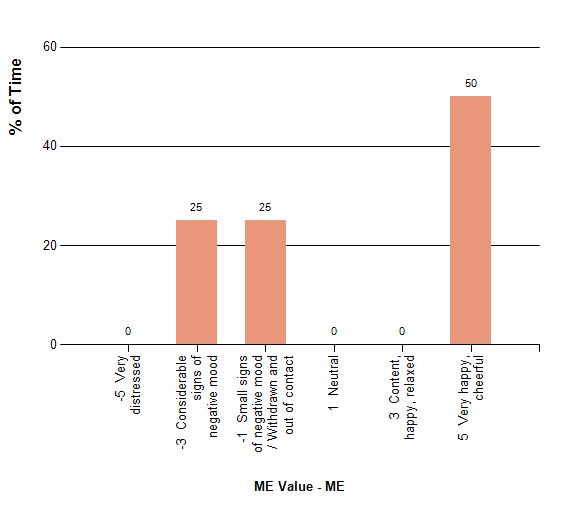
DCM graph showing assessments over a period of time
easyLog’s market leading care-Log+ care home and supported living management software now includes the University of Bradford’s Dementia Care Mapping as one of its standard assessment tools. And, implemented on tablet PCs, it becomes a very powerful, convenient and easy to use platform for recording the results of Dementia Care Mapping observations.
Dementia Mapping seeks to record what everyday life is like for a person with dementia. It was developed by the University of Bradford’s School of Dementia Studies in the early 1990s. easyLog’s implementation of Bradford Dementia Mapping software on tablet PCs means that carers (or Mappers as they are known during observation sessions) have a simple and portable touch-screen platform on which to record their observations.
Our Dementia Care Mapping software presents the carer with a list of service users from which they select the residents they are about to observe and the length of time of the assessment. The tablet PC then displays a timeline for each service user broken down by defined period – for example five or ten minute blocks. Dementia Mapping then occurs by the carer selecting a Behaviour Category and the ME (Mood/Engagement value) score occurring at that moment. Several observations can be recorded at any point as different behaviours occur with the option to also add relevant comments.
The Dementia Care Mapping observations are automatically collated and presented in both numerical and graphical form across a range of dates or for a specific day. The Dementia Care Mapping software graphs can be displayed in line graph and bar chart format with optional selection of specific Behaviour Categories and ME values.
Dementia care is an increasing element of many of easyLog clients’ care services. And, according to statistics published in The Lancet in December 2014 (Global Burden of Disease Study 2013), the need for dementia care is only set to rise. The report is an in-depth look at changing patterns of 240 separate causes of death worldwide in 188 countries during the 23 years between 1990 and 2013 and highlights dementia as now being the third largest cause of death (source: http://www.thelancet.com/journals/lancet/article/PIIS0140-6736(14)61682-2/abstract).

Observations recorded on a graph using DCM
